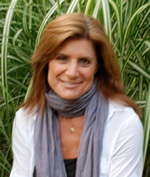The long-awaited Green Exchange is finally buzzing as more eco-minded businesses started moving in just after the new year.
You’ve probably seen it hundreds of times from the Kennedy Expressway, jutting out to the east on Diversey Avenue. The rehab project of the old Cooper Lamp Factory was announced with much fanfare about five years ago as the anticipated largest hub of green businesses under one roof anywhere in the country. Baum Development, which purchased the 272,000-square-foot historic landmark building, quickly hoisted a massive Green Exchange sign atop the structure. Baum went to work on a major conversion, with plans to add many green and energy efficient features to the structure as well.
The project was moving forward until the fall of 2008, when the financial markets crashed and Baum found itself without a lender for the rehab, according to David Baum, co-developer of the exchange. He recounts that money for construction dried up and he struggled for the next two years to cobble together financing to keep the renovation afloat.
“It was an extremely stressful time for us, just like everyone else,” he recalls.
By the end of 2009, Baum closed on a construction loan for the Green Exchange. Mr. Baum says he has lots of his own equity tied up in the building too, but won’t say how much.
Since then, Baum Development signed Coyote Logistics, a transportation logistics firm, as the anchor tenant, and proceeded to attract more businesses to fill up more than 85% of the exchange. The quiet space of the cavernous building was finally pierced last June when Coyote Logistics moved in and took over the entire third floor and part of the fourth floor. GreenChoice Bank moved in late last summer.
The most recent tenants who opened shop there over the last few weeks include 2 Point Perspective, an architectural firm that specializes in green design, Pivotal Production, a social media and green event planning company, and Purple Asparagus, a nonprofit that educates children and families about healthy, local food. Greenhouse Loft, an eco-friendly event space, and others moved in last fall.
Aside from the workers’ private offices, there is lots of room for communal gathering. There will be conference rooms for sharing. A rooftop deck will support an outdoor public area, a green roof, an organic vegetable garden, and a bee co-op for producing honey. And there are plans for a restaurant that will be headed by a well-known Chicago chef. Mr. Baum says that announcement is forthcoming in the next few weeks.
Crain’s met with him this week to learn more about the Green Exchange.
Crain’s: What was your original vision for the Green Exchange?
Mr. Baum: Five years ago, we saw there were people starting green businesses but everyone was operating on their own. we thought if we could aggregate these folks and they could share resources, they could be more successful in a collective environment.
We thought they could benefit from certain economies of scale, like shared conference rooms, an event space, a speakers forum, and a website. And then there’s a more abstract idea about shared referrals. We’ve created a community of like-minded tenants that can help one another.
Did you consider constructing a new LEED-certified building with all the latest green bells and whistles?
Mr. Baum: I’m a fan of LEED (Leadership in Energy and Environmental Design) and LEED standards (by the U.S. Green Building Council), but the greenest building you can build is the one you don’t knock down. To work with something that already exists was a very sustainable way to go.
Crain’s: Can you list some of the greenest features in the Green Exchange building (aside from the tenants)?
Mr. Baum: We have a 41,000-gallon rain cistern on the roof that will collect rain water and pump it through the building for our plant garden, our green roof and an organic working garden. We’re working with the Chicago Honey Co-op to have a beehive for honey on our roof. We’ll be growing some of our own food with WeFarm America that will be watered with recycled water and used at the restaurant. Leftover food from the restaurant will be used as compost for our gardens. It’s all very symbiotic.
We have an escalator that uses 30% less energy than regular ones. We have recycled wood in the building from barns, tiles that are recycled from aluminum cans. We even have a fantastic piece of art work by a Chicago artist made from 1,500 washers. We’ll also have electric charging stations in our parking lot and I-Go Car Sharing will be there too.
Crain’s: Did your tenants have to pass some “greenness” test to qualify for a spot in the building?
Mr. Baum: We’re not the green police. We went to Delta Institute to be the arbiters of green, but only used them once. The people we get are so mission-focused that there was never really an issue about whether they’re green. If you’re greenwashing, you don’t want to be here.
Crain’s: It’s ironic that such a green-focused building isn’t really conveniently located to great public transportation. How are you addressing that problem?
Mr. Baum: We agree, but there are ways to improve it. There is a bus route that stops in front of the building. We also run a shuttle during rush hour that picks up at the Metra, and at the blue line and red line el stops nearby. It’s not a hybrid shuttle bus, but at least it keeps people out of their cars.
We also have a bike room that holds 100 bikes, and a shower room, too.
Crain’s: Is there a model for this type of green business hub in other cities?
Mr. Baum: The closest thing to it I’ve seen is the Jean Vollum Natural Capital Center in Portland, Ore. But it’s only 65,000 square feet. There’s nothing in the country on the scale of the Green Exchange.



